At its best this colourful racer has the power to improve your day.
Amongst its many riches, Wheel World is a reminder that a game can appear to be constructed from familiar pieces while still feeling entirely unfamiliar to play.
To put it another way, there are a lot of elements I tell myself that I sort of recognised rattling around inside this open-world racing adventure. Races see you collecting letters to spell out words, a la Tony Hawk. You unlock parts of the map, or at least reveal its many secrets, by visiting shrines, in a manner that could come from any number of Ubisoft mega-games. And when you’re right in the action, alternate routes are closed off with massive glowing chevrons, while you earn boosts for doing dangerous things like getting air or toying with oncoming traffic. Burnout, sweet Burnout, is that you?
But in truth, Tony Hawk, Ubisoft and Burnout are nowhere to be seen in the flow of the game from moment to moment. Or perhaps it’s better to say they may be seen at times but never truly felt. And while I love Tony Hawk and Burnout, this is good news. Because when it comes to the feeling, Wheel World is its own thing. It’s exhilarating and brisk and rather personal – I want to say human-sized – in terms of its focus and sense of scale. At its best, it’s even quietly restorative. On a bad day, playing Wheel World will make you feel a bit better.
And that’s because of the vehicle at the heart of it, I think. Wheel World is a story about bikes and a world in thrall to bikes. There are religions surrounding bikes here, along with gods and ancient myths of wheels and drive chains and saddles, and all that ties into a story in which you’re chosen by ancient biking spirits and asked to perform a neglected ritual. What this amounts to is bombing around a couple of compact open worlds and engaging various groups in either checkpoint or point-to-point races as you rebuild a magical bike whose parts have been scattered. Fine. All good. But you do it on bikes! Not motorbikes! Pushbikes!
And pushbikes, Wheel World is eager to remind players, are marvelously strange things even before you build your cosmology around them. Just look at the game’s hero Kat while they’re racing along on one. They’re pretty much folded into this contraption, one thin, angular piece of improbable origami slotted into another. There are no motors involved, and yet between the meeting of the human and the machine? Through all that you somehow get the kind of movement that conjures its own wind to ripple over skin and hair and knuckles and remind you that the world is dynamic and alive and that you are an animating part of it.
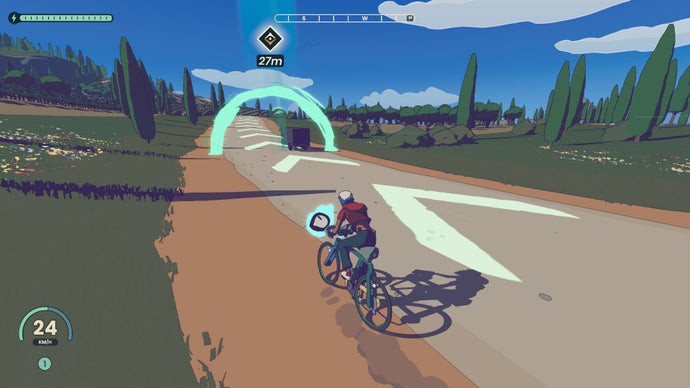
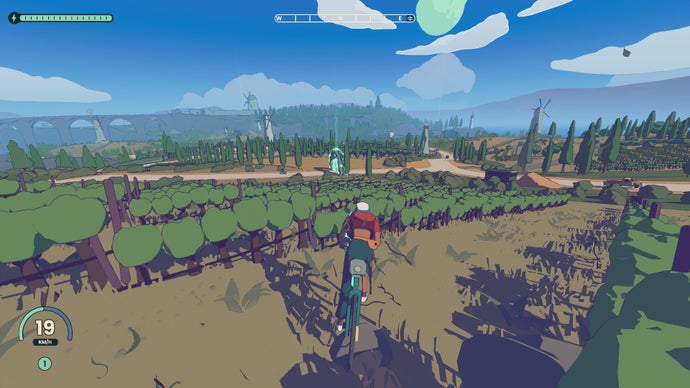
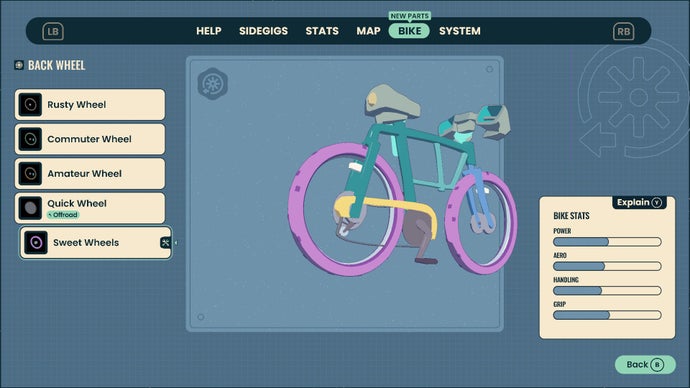
Look at the way Kat is pointed forward, look at that focus and determination! And this is weird too, because bikes put you very firmly into the real world of space and tempo, of vector judging and oncoming threats, and yet they’re simultaneously the stuff of dreams. You become a thing of arcs and doodling lines, you become the racing nib of some cosmic fountain pen. You are a point of connection with the earth, and yet you’re defined by constant movement. What magical stuff.
This is Wheel World’s great trick. It sets you lose amongst these open worlds – the first and best is a bucolic, Italy-tinged wonder that feels like a collaboration between Cezanne and Moebius. I appreciate that neither of those people are actually Italian. Anyway, it’s a place where the trees are pointed like quills and the hills are covered in vineyards and the tractors are audacious works of caricature. And then it reveals that these worlds are made of grippy straights and tangled throughlines and curves that fight you gorgeously as you try to take them at speed. The world exists for you to find paths through it.
This means the world is fun even when you’re not racing. While your job is to battle teams on the open road and earn rep so you can take on bigger, more consequential battles, you spend a lot of time in Wheel World just exploring, looking for new races or shrines, or shops or even free bike parts littered about the place. Bike parts allow you to replace your starting junker bike piece by piece, trading in forks, frame, seat etc., and each new piece comes with its own stats. These stats affect everything from the bike’s aerodynamics (I typed aerodynamism and sadly Google Docs was there to correct me) to its grippiness. Some of them come with perks, that will refill boost in certain circumstances, for example.
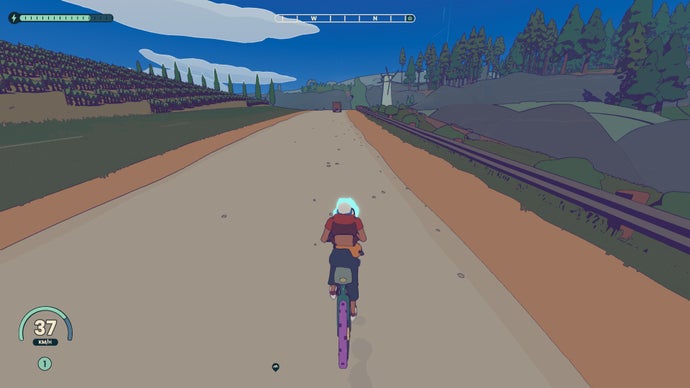
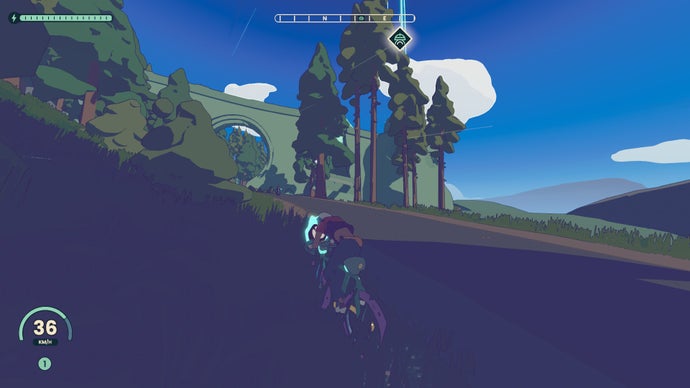
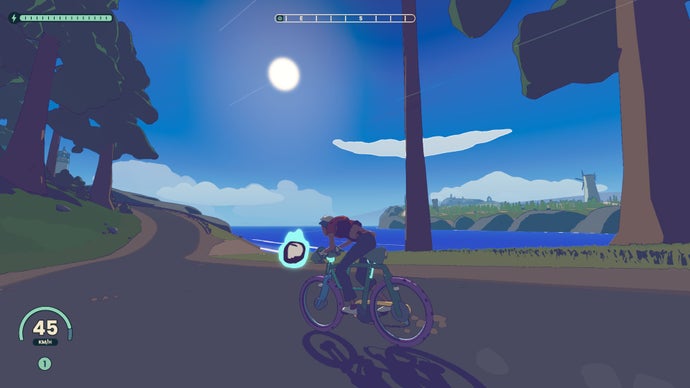
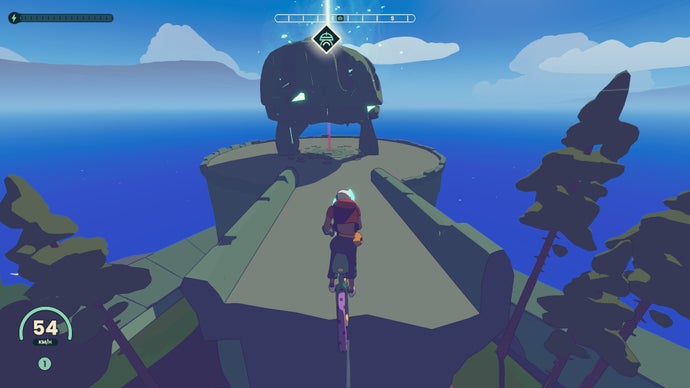
The genius of this system is that while some bike parts are definitely better than others, a lot of them – and there are a lot of them – are merely different. So you can remake your bike for each new challenge, depending on whether the terrain is rough, whether there are a lot of straights, or whether you’ll be weaving and cornering a lot. Different races all bring their own challenges, and they all have a range of different completing challenges, like finishing in the top three, beating a time, or finishing in first while collecting the three letters K-A-T scattered around the course.
But they all challenge you to understand the same fundamentals, arranged in different ways. Each race will generally start with a collegiate muddle of racers, giving you plenty of opportunity to draft and gain boost from your rivals. But you need to know when to cash in that boost and how to recharge it. You need to keep a look-out for jumps and means of cutting out parts of the track. Increasingly, as the game progresses, you need to dodge traffic and navigate chicanes, and even push back against aggressive cyclists.
This sounds like a lot to think about, but like any kind of learning, Wheel World is at its bets when the lessons have been internalised, and each track becomes nothing but those arcing, curving roads that whisper to you when to boost and when to stop pedalling and let gravity take you. Throw in bikes that come with gears and you need to learn it all over again, but you can still work your way back to that place where Wheel World is at its panoramic, wind-tugged, empty-headed best, when it’s all just beauty and movement.
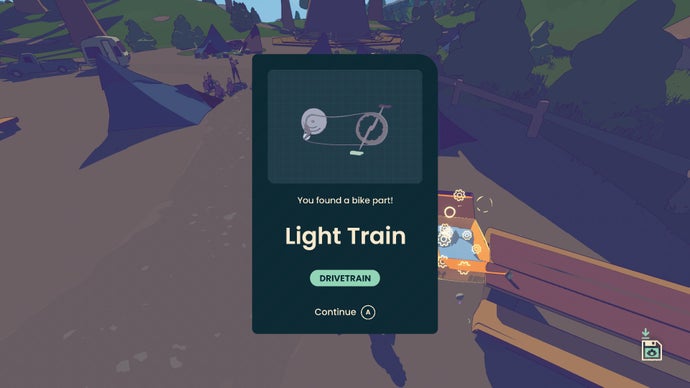
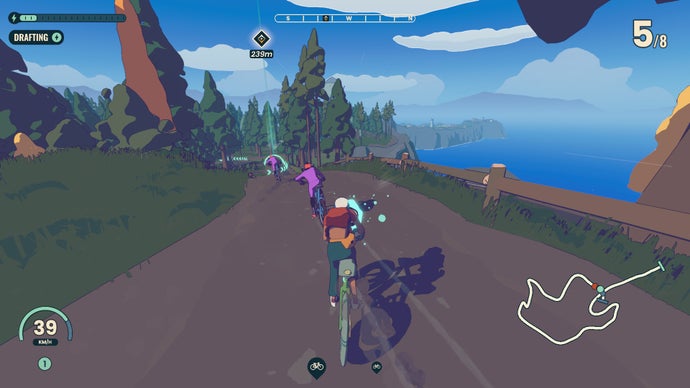
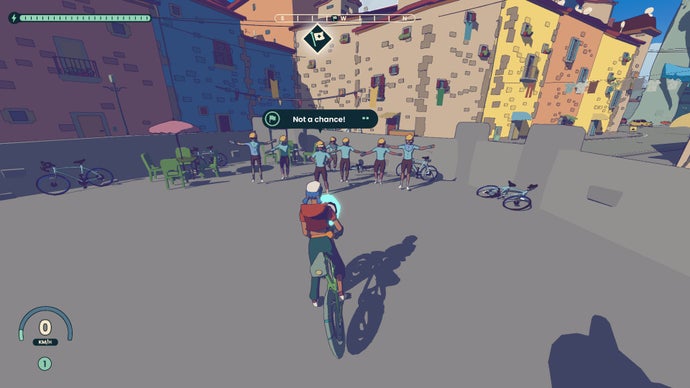
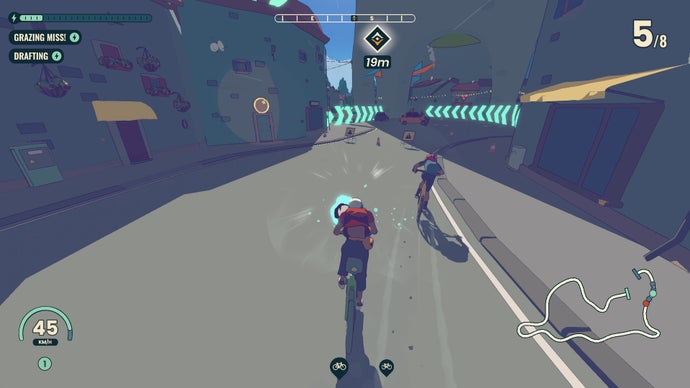
There are little annoyances, I imagine. There’s no instant restart once you’ve finished a race – none that I could find anyway – but the game generally deposits you fairly close to the point where you can cycle over and kick it off again anyway. Equally, the game’s first environment is so beautiful and transporting, so balmy and breezy and rustic, that some people might not enjoy the murkier, more dystopian second area. Personally, I felt I was trading Montaigne Country for Los Angeles through a Matrix filter, so I was pretty happy, but the tonal shift is definitely very real.
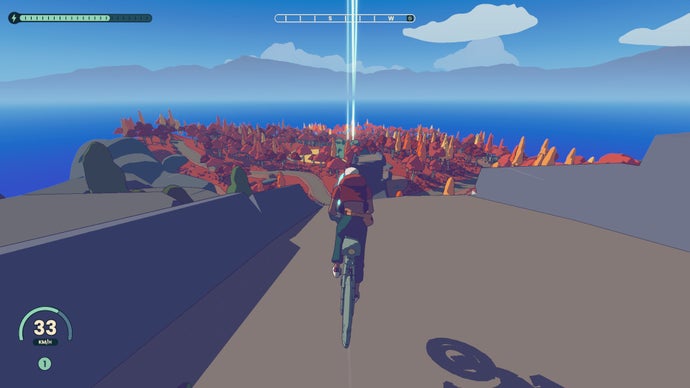
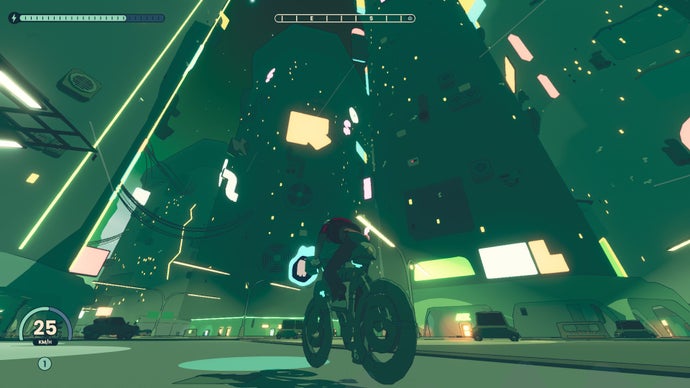
But beyond these kinds of concerns there’s so many little things that Wheel World does so beautifully. There are those bike part packages waiting for you to uncover them. There’s one area in particular where you emerge from forest to find yourself skimming along a perfect stretch of rugged coast. There’s the fact that you have to get off your bike to talk to people. There’s the fact that shrines are triggered with a ding of your tiny bike bell.
What a lovely thing this game is. It’s focused, quite neatly, on a sensation that games don’t visit that often – pedal power – and through that it manages to cover dreamy exploration and thrilling competition. Wheel World, you really are something else.
A copy of Wheel World was provided for review by Annapurna Interactive.
